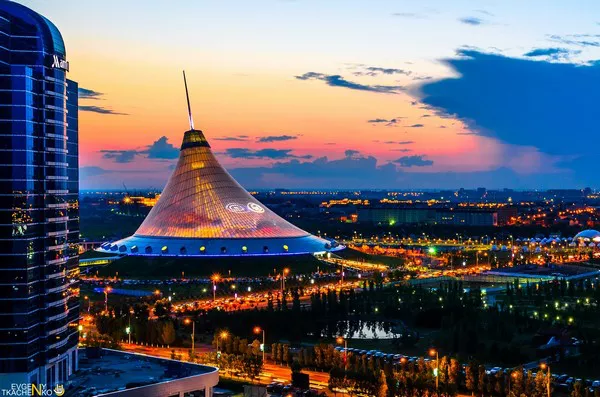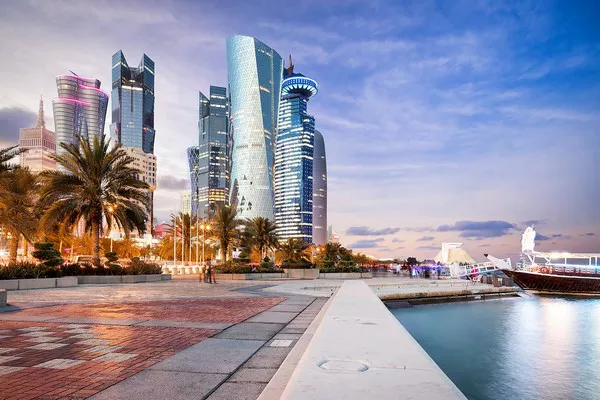Landlocked countries, defined as nations without direct access to any ocean or sea, often boast unique landscapes, cultures, and challenges. While coastal nations benefit from maritime trade and strategic positions, landlocked countries must navigate geopolitical and economic considerations within their continental confines. In this comprehensive exploration, we turn our attention to the world’s three largest landlocked countries, each with its distinctive features and contributions to global affairs. From the expansive steppes of Central Asia to the rugged terrain of South Asia, these nations play vital roles in shaping regional dynamics and offer insights into the complexities of landlocked geopolitics.
The World’s 3 Largest Landlocked Countries
1. Kazakhstan: The Vast Expanse of the Eurasian Steppe
Geography and Landscape
As the world’s largest landlocked country, Kazakhstan spans the vast expanse of the Eurasian Steppe, covering a diverse range of landscapes from deserts to mountains. Bordered by Russia to the north, China to the east, Kyrgyzstan, Uzbekistan, and Turkmenistan to the south, and the Caspian Sea to the west, Kazakhstan occupies a strategic position in Central Asia.
Economic Significance
Kazakhstan’s economy is driven by its rich natural resources, including oil, natural gas, and minerals. The country is a major contributor to global energy markets and has positioned itself as a key player in the Eurasian Economic Union. The Caspian Sea, despite being a landlocked body of water, provides Kazakhstan with vital transportation access and opportunities for economic cooperation.
Cultural Diversity
Home to a diverse range of ethnic groups, including Kazakhs, Russians, Uzbeks, and Ukrainians, Kazakhstan embraces a rich cultural tapestry. The Kazakh people, with their nomadic heritage, contribute to the nation’s distinct identity, reflected in traditions such as horsemanship and traditional music. The city of Almaty, nestled against the backdrop of the Tian Shan mountains, serves as a vibrant cultural hub.
2. Mongolia: The Land of the Eternal Blue Sky
Geography and Nomadic Heritage
Situated in East Asia, Mongolia is a vast landlocked country bordered by Russia to the north and China to the south, east, and west. Known as the “Land of the Eternal Blue Sky,” Mongolia is characterized by its expansive steppes, high plateaus, and rugged mountain ranges. The nomadic traditions of the Mongolian people are deeply embedded in the country’s history and culture.
Economic Challenges and Opportunities
Mongolia faces economic challenges due to its landlocked status, compounded by harsh climate conditions and limited infrastructure. However, the country’s vast mineral resources, including coal, copper, and gold, present opportunities for economic development. Efforts to strengthen regional cooperation and improve transportation links are crucial for Mongolia’s economic sustainability.
Cultural Heritage and Naadam Festival
Mongolia’s nomadic heritage is celebrated through cultural practices such as traditional music, dance, and the unique “ger” dwellings. The annual Naadam Festival, featuring the “Three Manly Games” of wrestling, horse racing, and archery, provides a window into Mongolia’s cultural richness. The capital city, Ulaanbaatar, serves as a center for both modern and traditional elements of Mongolian life.
3. Afghanistan: Crossroads of Central and South Asia
Geopolitical Importance
Situated at the crossroads of Central and South Asia, Afghanistan holds strategic significance in the region’s geopolitical landscape. Bordered by Iran to the west, Turkmenistan, Uzbekistan, and Tajikistan to the north, China to the northeast, and Pakistan to the east and south, Afghanistan’s location has made it a historical and contemporary focal point for political and cultural interactions.
Challenges and Resilience
Afghanistan has faced enduring challenges, including conflict, political instability, and economic struggles. The country’s landlocked status intensifies these challenges, limiting access to maritime trade routes. However, Afghanistan’s people exhibit resilience, and the nation holds great potential for economic growth and development with stability and strategic investments.
Cultural Heritage and Ancient Cities
Afghanistan boasts a rich cultural heritage that includes ancient cities, archaeological sites, and diverse ethnic groups. Cities like Kabul, Herat, and Kandahar reflect the country’s historical importance along the Silk Road. The Buddhas of Bamiyan, despite facing destruction, are symbolic of Afghanistan’s ancient Buddhist heritage.
See Also:TOP 10 MANGO PRODUCING COUNTRIES IN THE WORLD
Conclusion
The world’s three largest landlocked countries—Kazakhstan, Mongolia, and Afghanistan—offer profound insights into the complexities of landlocked geopolitics. From the steppes of Central Asia to the rugged terrain of South Asia, these nations navigate challenges and embrace opportunities inherent in their continental locations. Economic diversification, cultural heritage, and geopolitical considerations shape the trajectories of these landlocked giants.
As the global community strives for interconnectedness, acknowledging the unique strengths and challenges of landlocked countries becomes imperative. Regional cooperation, investment in infrastructure, and diplomatic efforts are essential for unlocking the full potential of these nations and fostering a more inclusive and interconnected world. The vast landscapes and resilient people of Kazakhstan, Mongolia, and Afghanistan exemplify the enduring spirit of landlocked nations in the face of geographical constraints, contributing to the rich tapestry of our global community.
You Might Be Interested In:
























